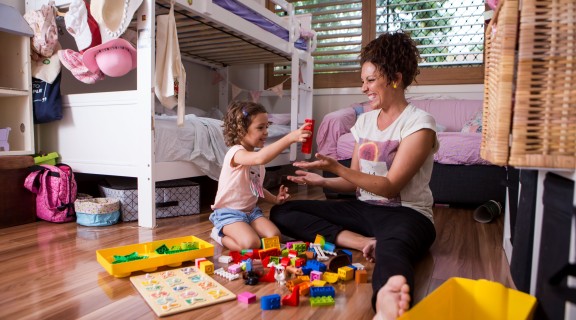
Children as inventors
12 April 2022 | State Library of Queensland
Children have an endless sense of wonder and possibility. They have an unlimited imagination and love making their own creations, drawing their own worlds, making up their own stories, and inventing things.
Children’s art and other creative experiences foster communication, listening, attention, and imagination.
Creativity is the ability to think outside the box and to string two unrelated ideas together in a new way. Opportunities to be creative are vital for children’s mental health and wellbeing, and foster developmental skills including:
- Fine motor skills
- Manual dexterity, from activities such as holding a paintbrush or pencil, cutting shapes, or threading beads
- Identification of shapes, colour, and texture
- Working with materials teaches them about colours, shapes and textures
- How things work and how they fit together
- Mental growth, by providing opportunities for trying out new ideas, new ways of thinking and planning, problem-solving, exploring, discovering, and imagining
Communication a key element
Talking with your children about how their art helps develop their communication skills. For example, “Why did you choose that colour?” or “Tell me about what you made.” - Asking children to explain their work and follow verbal instructions helps improve listening and comprehension.
Young inventors
It’s not just oddly-shaped cars or houses children create. Many everyday objects were made by great inventors in their childhood, including:
- The popsicle: invented by Frank Epperson
- The trampoline: invented by George Nissen
- Braille: invented by Louis Braille
- Christmas lights: invented by Albert Sadacca
- Flippers: invented by Ben Franklin
- Toy truck: invented by Robert Patch, who was granted the patent for the toy truck originally made from bottle caps and cardboard. He was just six years old when he made his invention in 1963.
Art at home
When setting up your own art experience, provide the glue, scissors, and other items to let children create their own unique piece. The more restrictions like templates and expectations you create, the less inspired your child could be.
Some studies show that providing the exact replica of dress up props like toy telephones and stethoscopes can hinder experimental and makeshift replacements. Instead, provide play materials that can be used in numerous ways like sticks, cardboard, and old kitchen utensils.
You don’t want to hinder the next great inventor!
Great inventions of the world
Here are some books on Inventions:
- 1000 Inventions and Discoveries by Roger Bridgman
- Australia’s Amazing Inventions by Frances Payne
- Cars, Trucks and Trains: Accidental History of Inventions by John Richards
- The First Scientists by Corey Tutt
-
Story of Inventions by Catherine Barr
Comments
Your email address will not be published.
We welcome relevant, respectful comments.